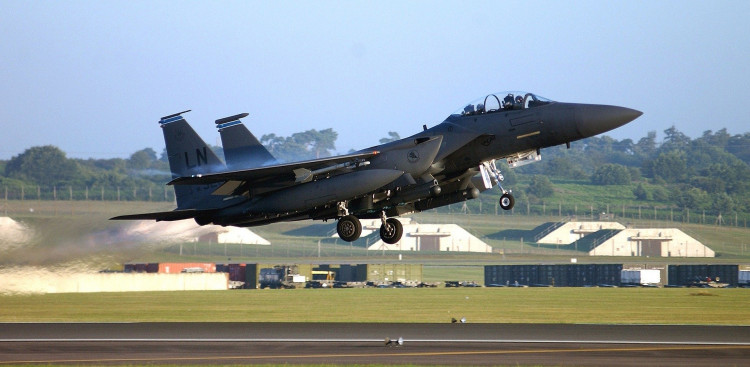An internal debate is raging within the U.S. Air Force on how to best use lasers in future combat.
This reexamination of priorities, technical challenges plus the raging COVID-19 pandemic forced the Air Force to postpone to 2023 the long-planned first flight demonstration test of an airborne laser weapon aboard a fighter jet. The test, which is part of the ambitious "Self-Protect High Energy Laser Demonstrator program" (SHiELD), was originally planned for 2021.
Jeff Heggemeier, SHiELD program manager for the Air Force Research Laboratory (AFRL), said what they have is a really complex technology and they're trying to integrate a small laser package into a dynamic flight environment. What they're ultimately "trying to do with this program demonstrates that laser technology is mature enough to be able to integrate onto that airborne platform."
The two-year-long delay will give the Air Force time to decide on the an optimal role for airborne lasers in combat beyond their use in fighter aircraft. SHiELD's goal is to give combat jets a weapon that can counter air-to-air missiles fired at them by enemy aircraft and surface-to-air missiles (SAMs) fired by ground-based air defense systems.
Mike Griffin, Under Secretary of Defense for Research and Engineering at the Department of Defense (DoD), in May, said he remains "extremely skeptical" an airborne laser can be used for missile defense. This led the Air Force to reconsider how it can best use directed-energy weapon (DEW) technologies.
Dr. Will Roper is the Assistant Secretary of the Air Force for Acquisition, Technology and Logistics, believes the most optimal use for SHiELD isn't aboard a fighter.
"What I've told that team is, let's have a dialogue," said Dr. Roper.
Dr. Roper wants the Air Force to set its sights on the small drone threat, which he described as "very worrisome." He said small aerial drones are difficult to track; it's hard knowing who's launching them and they're so cheap it doesn't make much sense to blast them with missiles costing hundreds of thousands of dollars each.
"So this is a perfect treat to make laser weapons real, and once they're real, we'll do what the military does. We'll look to scale the power," said Dr. Roper.
Heggemeier said there are many ways the Air Force can benefit from the laser technologies spawned by the SHiELD program. He said the whole point of SHiELD is to answer the question, "Is laser technology mature enough to go on an airborne platform? Have we solved enough of those technical challenges that this is now a feasible thing?"
SHiELD consists of three elements: the laser being developed by Lockheed Martin; the beam control system from Northrop Grumman and the pod that encases the weapons system from The Boeing Company.
Heggemeier said the pod is being built. The integration of the laser and beam control system will take place in 2021.
The Air Force's investment in DEW systems remains huge. Its budget sets aside cash for high-energy lasers (HELs) in multiple funding lines.
For fiscal 2021, the Air Force requested $15.1 million for basic research and $45.1 million for applied research for HEL technology. It also wants $13 million for high-power, solid-state laser technology. For the current fiscal year, the Air Force received $14.8 million for basic research and $48.2 million for applied research for laser technologies.
Apart from trying to mount lasers on fighters, the Air Force is also testing lasers mounted on aircraft for use against ground targets. In 2017, it decided to use the Lockheed AC-130J Ghostrider gunship as the testbed for an airborne combat laser.






